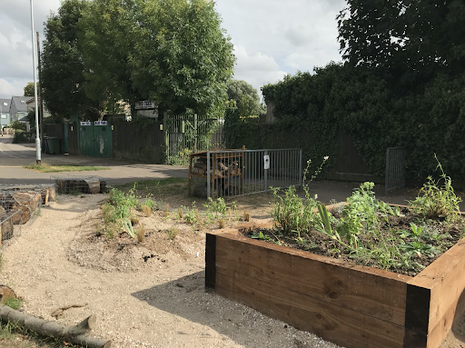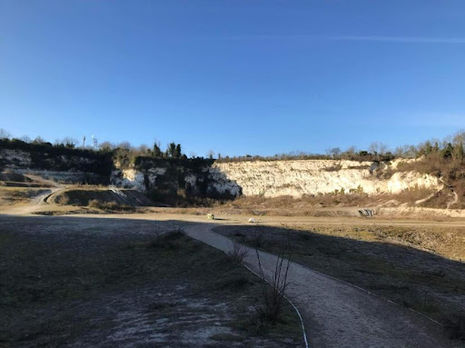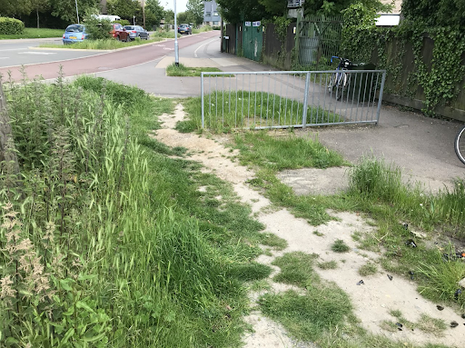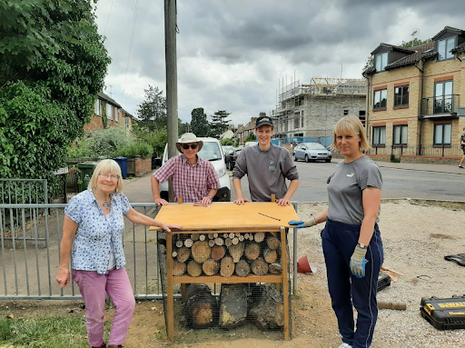Uniting the Cambridge community through gardening: In conversation with Stepan Slavin
Stepan Slavin tells Moby Wells about his experience developing the Water Street Community Garden

Town and gown: the lack of connection between a university and the town it inhabits. At the centre of Parker’s Piece you will find ‘Reality Checkpoint’ as you walk into what is deemed the ‘real world’. For me, walking the streets of Cambridge is a process of discovery, in which I can gain glimpses into normality by way of windows, leaflets, and posters.
One such poster adorned the edge of a small community garden on Water Street, on the opposite side of the river to Stourbridge Common. My interest in gardens like this comes from running the Caius allotment society which, like Water Street, relies on the careful use of a small space. Anticipation building, I reached out to Stepan, who runs the garden.
Stepan is both a tutor and a member of the Community Engagement team within Cambridge City Council, and has previously volunteered for the Wildlife Trust. Having studied politics, he had not imagined that he would find himself setting up community gardens and liaising with allotment groups.
The Water Street Community Garden, once a patch of soil, grass and nettles, is now a thriving biodiversity hotspot in the heart of residential Cambridge. Thanks to the help of a number of volunteers, the completed Community Garden has had a transformative effect on the neatness and character of the street. Stepan largely worked with the Nature Reserve Officer of the City Council who recommended that the garden should mimic Cambridge’s natural habitats. Cambridge is special in having significant areas of chalkland grasslands, visible in places like Hobson’s Brook Local Nature Reserve (LNR), the source of Hobson’s Conduit, or the West Pit LNR, part of the Cherry Hinton chalk pits.

The garden was designed to emulate this in an environmentally-friendly way, Stepan says. Crushed ceramic, composed of broken pieces of bathroom tiles, was used in the landscaping. All of the plants were donated by local individuals and groups. The Community Garden includes a variety of grasses, reflecting Cambridge’s biodiversity, as well as hardy plants which require fairly limited maintenance. These plants are drought-resistant and designed to cope with hot summers, which we will likely experince more of.
Walking through the Community Garden, I naively assumed that it would be generally popular. However, Stepan notes that there was plenty of criticism, which he acknowledges is a fairly frequent occurrence whilst working with the council.
The first major issue that members of the public pointed to was ecological. The site was previously covered with high nettles and grass, which provided its own mini-habitat – a space for small insects and mammals, protected from the road. The second criticism was that the Community Garden would encourage anti-social behaviour. A proposal for a bench was shot down for fear that it would turn into a drinking spot. People were concerned that all the work would be for nothing if people simply vandalised it.
Taking this criticism on board, a bug hotel was created, providing a permanent home for small insects; the problem with the pre-existing grass was the threat of the mower, Stepan explains. To reduce the risk of crime, the bench was scrapped, and all elements were made as fixed as possible. Logs to provide shaded and damp areas for insects, were covered in an irremovable cage. Mutual support among the volunteers and employees helped to take the sting off the criticism.

The Community Garden also aimed to be as inclusive and unobtrusive as possible, Stepan tells me. Its raised bed enabled those in wheelchairs to admire the plants, as well as giving volunteers with disabilities the opportunity to help with the project. Additionally, the low height of the objects was necessary for visibility, given its location on the edge of a road and bike path.

What does the future have in store for Cambridge’s community gardens? Stepan says that the big test will be the heat of the summer and ensuring that there are enough volunteers to water the plants. Two more community garden projects are in the works, one on Izaak Walton way, and one on Redcross Lane near Addenbrokes. These projects are always happy to take on new volunteers of any experience level, providing a great chance for students to enact real community change.
Despite having developed strong links with local people, Stepan still concludes that Cambridge University still “feels very separate from the city.” Stepan encourages those who are interested in bridging this gap to come along to the various community meet-ups, to meet a wide array of people from a variety of backgrounds. It is only through making conscious efforts that the town and gown divide can be closed. Gardening is open to everyone!
Students interested in volunteering can sign up here: https://www.cambridge.gov.uk/streets-and-open-spaces-volunteers
Stepan can be contacted at: stepan.slavin@cambridge.gov.uk
 News / Eight Cambridge researchers awarded €17m in ERC research grants27 December 2025
News / Eight Cambridge researchers awarded €17m in ERC research grants27 December 2025 News / Downing investigates ‘mysterious’ underground burial vault 29 December 2025
News / Downing investigates ‘mysterious’ underground burial vault 29 December 2025 News / News in Brief: carols, card games, and canine calamities28 December 2025
News / News in Brief: carols, card games, and canine calamities28 December 2025 Sport / Hard work, heartbreak and hope: international gymnast Maddie Marshall’s journey 29 December 2025
Sport / Hard work, heartbreak and hope: international gymnast Maddie Marshall’s journey 29 December 2025 Interviews / Meet Juan Michel, Cambridge’s multilingual musician29 December 2025
Interviews / Meet Juan Michel, Cambridge’s multilingual musician29 December 2025






